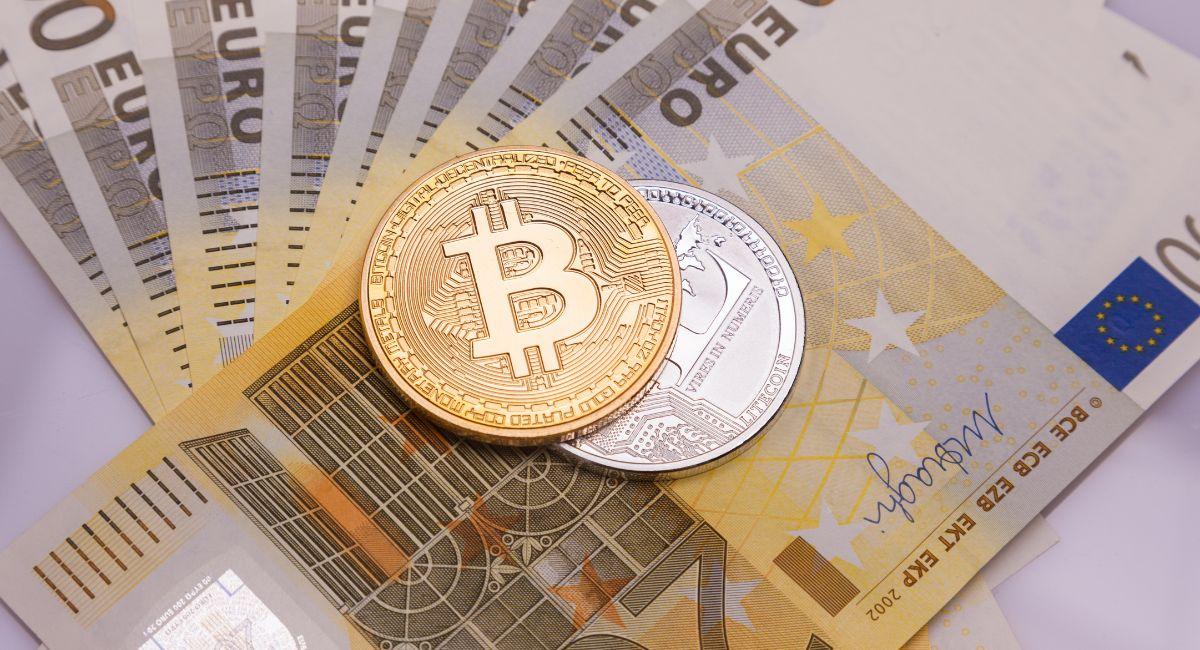Top 10 Amazing Ways To Make Digital Users Feel Secure About Their Crypto Assets
Crypto assets represent a broad category of digital or virtual assets that leverage cryptographic techniques for secure financial transactions and are often built on blockchain technology. This term encompasses various forms of digital assets, including cryptocurrencies, tokens, and other blockchain-based instruments. Here’s an overview of crypto assets:
1. Cryptocurrencies:
- Cryptocurrencies are the most well-known type of crypto assets. Bitcoin, the first and most widely recognized cryptocurrency, pioneered the concept of decentralized digital currency. Other examples include Ethereum (ETH), Ripple (XRP), and Litecoin (LTC). These cryptocurrencies serve as a medium of exchange, store of value, and unit of account within decentralized blockchain networks.
2. Tokens:
- Tokens represent a diverse range of digital assets built on blockchain platforms like Ethereum. These tokens can represent ownership of physical or digital assets, access to specific services, or voting rights within a decentralized ecosystem. Initial Coin Offerings (ICOs) and Security Token Offerings (STOs) are common fundraising mechanisms for token-based projects.
3. Non-Fungible Tokens (NFTs):
- Non-Fungible Tokens (NFTs) are unique digital assets that use blockchain technology to verify ownership and authenticity. NFTs have gained popularity in various industries, including art, music, gaming, and virtual real estate. Each NFT is distinct, making them valuable for representing rare or one-of-a-kind digital items.
4. Stablecoins:
- Stablecoins are cryptocurrencies designed to minimize price volatility, typically by pegging their value to a stable asset like a fiat currency (e.g., USD) or a commodity. This stability makes stablecoins more suitable for everyday transactions and as a store of value.
5. Decentralized Finance (DeFi) Tokens:
- DeFi tokens are associated with decentralized finance platforms that aim to replicate traditional financial services without intermediaries. These tokens are used within DeFi protocols for lending, borrowing, decentralized exchanges, and yield farming.
6. Central Bank Digital Currencies (CBDCs):
- Some governments are exploring or developing Central Bank Digital Currencies (CBDCs), which are digital versions of their national currencies. CBDCs leverage blockchain or distributed ledger technology for efficiency and enhanced financial services.
7. Utility Tokens:
- Utility tokens provide access to specific functionalities or services within a blockchain network or decentralized application (dApp). These tokens are essential for participating in and contributing to the network’s ecosystem.
8. Security Tokens:
- Security tokens represent ownership in traditional financial assets, such as stocks, bonds, or real estate. These tokens are subject to securities regulations and aim to provide more efficient and transparent methods of trading traditional financial instruments.
9. Governance Tokens:
- Governance tokens grant holders the right to participate in the decision-making processes of a decentralized organization or protocol. Holders can propose and vote on changes to the network’s rules, making governance tokens a key component of decentralized governance structures.
10. Cross-Border Transactions: – Crypto assets enable efficient and borderless transactions, reducing the friction associated with traditional cross-border payments. This feature has implications for financial inclusion and international trade.
Also, read- Top 6 Strong Pillars Of Blockchain Networks You Need To Know About
Importance of crypto assets

Crypto assets, including cryptocurrencies, tokens, and other digital instruments, hold significant importance in the contemporary financial landscape due to their transformative impact on various aspects of the economy, technology, and society. Here are several key reasons highlighting the importance of crypto assets:
-
- Decentralization and Financial Inclusion:
- Crypto assets operate on decentralized blockchain networks, reducing reliance on traditional financial intermediaries. This decentralized nature fosters financial inclusion, providing access to financial services for individuals who are unbanked or underbanked.
- Innovation in Finance:
- Crypto assets have spurred innovation in the financial sector. Decentralized Finance (DeFi) platforms leverage crypto assets to offer alternatives to traditional banking services, including lending, borrowing, and decentralized exchanges.
- Efficiency in Cross-Border Transactions:
- Crypto assets facilitate faster and more cost-effective cross-border transactions compared to traditional banking systems. This efficiency is particularly valuable in global trade, enabling seamless and real-time international payments.
- Tokenization of Assets:
- Crypto assets enable the tokenization of various assets, including real estate, art, and commodities. This process divides ownership into digital tokens, making it easier to trade and transfer ownership of traditionally illiquid assets.
- Smart Contracts and Programmable Money:
- Smart contracts, automated self-executing contracts with predefined conditions, are powered by crypto assets. These contracts enable programmable money, allowing for automated and trustless execution of agreements, reducing the need for intermediaries.
- Decentralized Autonomous Organizations (DAOs):
- Crypto assets play a key role in the formation and operation of Decentralized Autonomous Organizations (DAOs). These entities use blockchain and crypto assets to facilitate decentralized decision-making and governance.
- Non-Fungible Tokens (NFTs):
- NFTs, a type of crypto asset, have revolutionized ownership and provenance in the digital realm. They empower creators to tokenize and sell digital content, providing a new revenue stream and ensuring authenticity.
- Hedging Against Inflation:
- Cryptocurrencies, particularly those with capped supplies like Bitcoin, serve as a potential hedge against inflation. Their decentralized nature and fixed supplies can protect against the devaluation of fiat currencies.
- Global Accessibility:
- Crypto assets operate on a global scale, allowing users to access and use them from anywhere in the world. This global accessibility promotes financial inclusivity and borderless transactions.
- Technological Advancements:
- The development and adoption of crypto assets drive advancements in blockchain technology. The exploration of consensus mechanisms, privacy solutions, and scalability improvements benefits not only the crypto ecosystem but also the broader technological landscape.
- Privacy and Security:
- Certain privacy-focused crypto assets and blockchain technologies enhance user privacy and security. Users have greater control over their financial information and transactions, reducing the risk of identity theft and unauthorized access.
- Community Empowerment:
- Crypto assets empower communities to participate in the governance and decision-making processes of decentralized networks. This participatory model promotes a sense of ownership and engagement among users.
- Resilience in Economic Turmoil:
- In regions experiencing economic instability or currency crises, crypto assets can provide an alternative store of value and means of financial exchange, offering a degree of resilience in challenging economic conditions.
- Decentralization and Financial Inclusion:
Grayscale has pioneered the model of providing investors with exposure to digital assets as a security without the challenges of buying, storing, and safekeeping crypto. And is the world’s leading crypto asset manager by assets under management.
— Litest (@LitestApp) January 28, 2024
In addition to Bitcoin,… pic.twitter.com/QbKCDNrvj1
Top 10 ways to make Users feel secure about their crypto assets

Ensuring user confidence and security is crucial in the realm of cryptocurrencies and crypto assets. Here are ten ways to make users feel secure about their crypto assets:
- Educational Resources:
- Provide comprehensive educational resources on secure practices, including how to set up and use wallets, manage private keys, and recognize potential security threats. Informed users are more likely to take appropriate precautions.
- Secure Wallet Options:
- Recommend or provide users with secure wallet options, including hardware wallets or reputable software wallets. These wallets offer enhanced security features and protection against common threats like phishing attacks.
- Two-Factor Authentication (2FA):
- Encourage and enable two-factor authentication (2FA) for all user accounts. 2FA adds an additional layer of security by requiring users to provide a second form of identification, such as a code from a mobile app.
- Regular Security Audits:
- Conduct regular security audits of your platform or application. Identify and address vulnerabilities promptly to ensure a secure environment for users to manage their crypto assets.
- Transparent Communication:
- Maintain transparent communication with users regarding security measures, updates, and any potential security incidents. Building trust through open and clear communication is essential for user confidence.
- Insurance Coverage:
- Consider providing insurance coverage for users’ crypto assets. Insurance can offer protection against certain risks, such as theft or hacking incidents, providing an additional layer of assurance for users.
- Cold Storage Solutions:
- Educate users on the benefits of cold storage solutions for long-term asset storage. Cold wallets, especially hardware wallets, are less susceptible to online threats and hacking attempts.
- Regular Updates and Patching:
- Ensure that your platform or application is regularly updated with the latest security patches. Promptly addressing software vulnerabilities reduces the risk of exploitation by malicious actors.
- Secure Password Practices:
- Enforce strong password policies and encourage users to create unique and complex passwords. Provide guidelines on password management and periodic updates to enhance security.
- Customer Support and Assistance:
- Offer responsive and knowledgeable customer support to assist users with security-related inquiries or concerns. Having a reliable support system can reassure users that their issues will be addressed promptly.
Conclusion
In conclusion, fostering a sense of security among users is paramount in the realm of crypto assets, where the decentralized and digital nature introduces unique challenges and opportunities. Implementing a comprehensive approach to security not only protects users’ assets but also cultivates trust and confidence in the broader crypto ecosystem. The ten strategies outlined, including educational resources, secure wallet options, and transparent communication, collectively contribute to creating a secure environment for users.
Continuous efforts in user education, technological innovation, and proactive security measures are essential in staying ahead of evolving threats. Building a strong foundation of security practices, coupled with responsive customer support and adherence to legal compliance, demonstrates a commitment to user protection and satisfaction.
As the crypto landscape continues to evolve, maintaining a robust security infrastructure will be crucial for platforms and applications. Users, empowered with knowledge and supported by secure technologies, can confidently engage with crypto assets, unlocking the full potential of decentralized finance while minimizing risks.
In the ever-changing landscape of digital assets, security is not just a feature but a fundamental pillar that underpins the growth, adoption, and sustainability of the crypto ecosystem. Platforms that prioritize user security are not only safeguarding individual assets but also contributing to the overall credibility and longevity of the crypto industry.
Stay informed with daily updates from Blockchain Magazine on Google News. Click here to follow us and mark as favorite: [Blockchain Magazine on Google News].
Get Blockchain Insights In Inbox
Stay ahead of the curve with expert analysis and market updates.
latest from tech
Disclaimer: Any post shared by a third-party agency are sponsored and Blockchain Magazine has no views on any such posts. The views and opinions expressed in this post are those of the clients and do not necessarily reflect the official policy or position of Blockchain Magazine. The information provided in this post is for informational purposes only and should not be considered as financial, investment, or professional advice. Blockchain Magazine does not endorse or promote any specific products, services, or companies mentioned in this posts. Readers are encouraged to conduct their own research and consult with a qualified professional before making any financial decisions.

 Bitcoin
Bitcoin  Ethereum
Ethereum  Tether
Tether  Solana
Solana  XRP
XRP  Dogecoin
Dogecoin  USDC
USDC  Cardano
Cardano  Lido Staked Ether
Lido Staked Ether  TRON
TRON  Avalanche
Avalanche  Stellar
Stellar  Toncoin
Toncoin  Shiba Inu
Shiba Inu  Wrapped stETH
Wrapped stETH  Wrapped Bitcoin
Wrapped Bitcoin  Polkadot
Polkadot  Chainlink
Chainlink  Bitcoin Cash
Bitcoin Cash  WETH
WETH  Sui
Sui  NEAR Protocol
NEAR Protocol  Pepe
Pepe  LEO Token
LEO Token  Litecoin
Litecoin  Aptos
Aptos  Uniswap
Uniswap  Wrapped eETH
Wrapped eETH  Hedera
Hedera  Internet Computer
Internet Computer  USDS
USDS  Cronos
Cronos  POL (ex-MATIC)
POL (ex-MATIC)  Ethereum Classic
Ethereum Classic  Render
Render  Bittensor
Bittensor  Artificial Superintelligence Alliance
Artificial Superintelligence Alliance  Ethena USDe
Ethena USDe  WhiteBIT Coin
WhiteBIT Coin  Bonk
Bonk  Arbitrum
Arbitrum  Dai
Dai  Filecoin
Filecoin  Stacks
Stacks  Cosmos Hub
Cosmos Hub  OKB
OKB  MANTRA
MANTRA 


